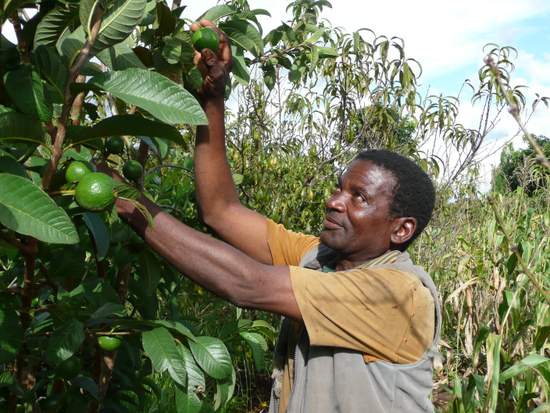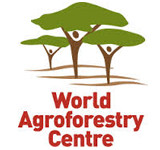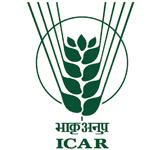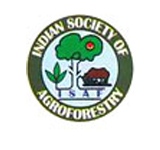
Vigyan Bhavan & Kempinski Ambience
10 - 14 February 2014
Delhi, India
blog

Today about 870 million people go hungry, every day around the world and the projections shows that the population would cross nine billion populations by 2050. For this burgeoning population, we need to produce enough affordable, quality food having rich energy and nutrition. When compared to all the interventions to meet the food and nutritional security, the horticulture sector especially the fruits having enormous possibility. The fruits with all the available minerals and vitamins are the potential candidates for achieving nutritional security. Therefore, sensitization of farmers about the potential benefits of the fruit trees is very much essential and also they need to be encouraged to practice fruit tree based system. If the research community develops suitable technologies, then the fruit trees can grow in almost all the farming systems.
There are many underutilized fruit trees in almost all the regions that can be grown under various abiotic stress conditions, if they are also introduced and some policy interventions like creation of marketing facilities and investment opportunities are made, there would be definitely diversification in the farms and we can be sure that there would be nutrient rich fruits available all round the year to the community from their farms. With the greater availability of the nutrient fruits all year round on the farm, new developments in the value chains and the good quantity of quality fruits and their products could be ensured across the domestic markets which would in turn ensure nutritional security of women and children.
In India, a UNEP/GEF Project on ‘Tropical Fruit Tree Diversity in India’ is being implemented at five sites with the 18 communities and is documenting the best practices and the identification of the available diversity with the farmers in mango, citrus and mangosteen. It is always mentioned that the we need to identify the agricultural pathways which improves the nutrition of women and children in the society. The marketing diversity research program at the Biodiversity International is also working for the development of ways to increase the livelihoods and marketing underused crop diversity, which have no market or value chain.
At the World Agroforestry Congress, I am expecting that from the deliberations on securing nutritional security through fruit tree based Agroforestry systems, I can learn about the feasibility of on-farm diversification with the fruit trees, interventions need to be made for increasing the availability of local fruits in domestic markets, understanding value chain, reduction in the post harvest losses.
I hope that during the congress, there would be more interactions, deliberations, opportunity to build teams which would definitely develop and formulate collaborative programs on agricultural biodiversity and conservation of fruit trees.
Photo: Nelson Mkwaila, a farmer in Malawi, uses fruit trees in his maize fields (The Agroforestry Food Security Programme in Malawi, supported by Irish Aid)
Blogpost by Sridhar Gutam, Senior Scientist, Central Institute for Subtropical Horticulture (Lucknow, India) – gutam2000(at)gmail.com
Photo by Charlie Pye-Smith (World Agroforestry Centre)
|
This post is entry nr #27 in our #WCA2014 blog competition. The five blogposts with the most and highest votes will receive a signed copy of the book "Trees for Life". The most popular blogpost will get an iPad.
This blogpost received 308 votes, with an average score of 5 (out of a max of 5).
Follow our #WCA2014 social reporting teamfollow our social reporting team via the #WCA2014 tag on Twitter, our blog and our Facebook page.
|






19 People have left comments on this post
I liked the idea, yes, it has good potential.
Yes, it is true that for meeting the community nutritional security, both in rural and urban farming systems, there should be a component of fruit trees.
This type of project will be helpful for the farmers as well as for the nations to ensure the quality and nutritional requirement of the people of nation
Nice blog on scope of securing nutritional security through fruit tree based Agroforestry systems.
Food security very required and necessary in whole world as well as our country we are considered food-secure when its occupants do not live in hunger or fear of starvation, but its depend on availability of food and one’s access to it. The World Health Organization defines three facets of food security: food availability, food access, and food use. Food availability is having sufficient quantities of food on a consistent basis. so i appreciated for this good work.
Nice article with good vision for Indian perspective. Hope this congress would provide suitable opportunities to author.
Tree crops such as fruit trees are contributing not only to nutrition security, but also to food security. Lack of consumer awareness on the health benefits of regular fruit consumption is the major factor for nutritional imbalance in rural areas.Fruits offer not only easily available energy, but also micronutrients such as vitamins and minerals necessary to sustain and support healthy human growth and activity.
Guava trees, growing outside the back door, can provide enough vitamin C to meet the needs of a family The Author has developed a nice concept. Hope that he will have good interactions with experts in the field and get an opportunity to develop good collaborative programmes which is the need of the hour or nutritional security.
This is a wonderful effort and quite informative too.
Yes, it is a novel idea and really has potential inthe third world countries. Expecting such kind of an idea and approaches through WCA-2014.
This article highlights the importance of fruits in nutrition security of women and children through practicing horticulture based ago-forestry system.
The blog post is very informative and if put into practice will definitely need the nutritional requirements of the rapidly growing population.
I will rate it as excellent.
Your story articulates complex issues is a simple and easy-to-follow way. Bravo!
Traditional Indian village peoples have fruits availability round the year. We in my youth enjoyed this nature and ancestor gift. The fruits were source of major nutrients and no any bone bita or other health supplement. Its sad that all these traditional fruits species and varieties have gone/vanish. The memory of traditional names, nice fragment and beautiful colours of Mango etc are still with us. Oh ! What model we adopted for my own/ village development? Today we are opening GENE banks to conserve the traditional trees seeds etc. We are also gowning tree as per zone wise as Mango, Guava belt. Why not all/ maximum in one village?. Agro -forestry is way to this. Thnx.
such system is required in drought prone areas…..good one
Very innovative and very well written blog…!! Brilliant
I totally agree with the article. Fruit based agro-forestry is gaining the popularity. Similarly, fruit tree based pasture growing system called “Horti-pasture system” is also becoming popular. Forages can be grown along with the forest trees called “Silvi-Pasture”. Now single tree system or mono-cropping is not recommended for various reasons. Tree based farming system or horti-pasture system or silvi-pasture system is more sustainable.
Farmers mainly ask friut trees for their farms
creation of marketing facilities and investment are must for sustainable development. well done
1 Trackback(s)